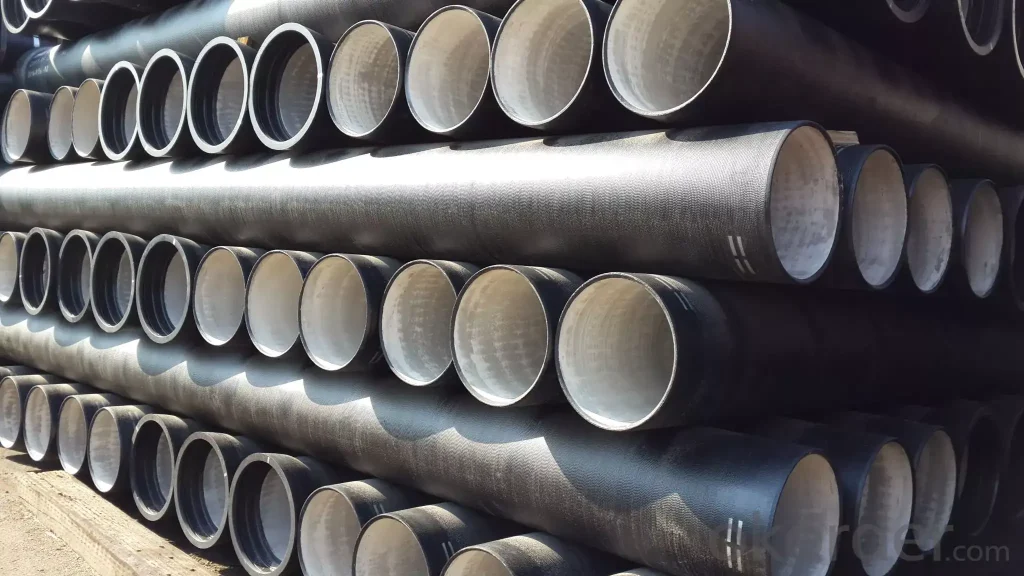Ductile iron pipes are integral components in modern water and wastewater infrastructure due to their strength, durability, and versatility. Understanding the concept of allowable stress is crucial for engineers and designers to ensure the safety and longevity of these systems.

1. What is Allowable Stress?
Allowable stress refers to the maximum stress that a material can withstand without failing or undergoing permanent deformation under specified conditions. In the context of ductile iron pipes, it is a critical parameter for designing systems that can safely handle internal pressures and external loads.
2. Determining Allowable Stress in Ductile Iron Pipes
2.1 Material Properties
The allowable stress is influenced by the material’s mechanical properties, which are defined in standards such as ASTM A536. For instance, ASTM A536 Grade 65-45-12 specifies a minimum tensile strength of 65,000 psi and a yield strength of 45,000 psi. These properties are essential for calculating the pipe’s capacity to withstand internal pressures.
2.2 Design Standards
Standards like ANSI/AWWA C150/A21.50 provide guidelines for determining the thickness of ductile iron pipes based on allowable stress. These standards utilize formulas such as the Barlow’s formula to calculate the required wall thickness to ensure the pipe can handle the expected internal pressures.
3. Factors Affecting Allowable Stress
3.1 Internal Pressure
The internal pressure exerted by the fluid within the pipe is a primary factor influencing allowable stress. Higher internal pressures require higher allowable stresses to prevent failure.
3.2 External Loads
External loads, including soil weight, traffic loads, and other environmental factors, contribute to the overall stress on the pipe. Design considerations must account for these external forces to ensure the pipe’s integrity.
3.3 Temperature Effects
Temperature variations can affect the material properties of ductile iron. Design calculations often incorporate temperature effects to adjust the allowable stress accordingly.
4. Calculating Allowable Stress
The calculation of allowable stress involves considering various factors, including material properties, internal pressures, external loads, and temperature effects. Engineers use established formulas and standards to determine the appropriate allowable stress for specific applications.
5. Safety Factors in Design
Incorporating safety factors into design calculations ensures that ductile iron pipes can withstand unexpected conditions without failure. For example, a safety factor of 2.0 is commonly applied in the design of ductile iron pipes to account for uncertainties and variations in material properties and loading conditions.
6. Comparison with Other Materials
| Material | Allowable Stress (psi) | Tensile Strength (psi) | Yield Strength (psi) |
|---|---|---|---|
| Ductile Iron | 16,000 | 65,000 | 45,000 |
| Steel | 20,000 | 70,000 | 50,000 |
| PVC | 10,000 | 30,000 | 20,000 |
This table illustrates the differences in allowable stress and material strengths among ductile iron, steel, and PVC pipes. Ductile iron pipes offer a balance between strength and flexibility, making them suitable for various applications.
7. Frequently Asked Questions (FAQs)
7.1 What is the typical allowable stress for ductile iron pipes?
The typical allowable stress for ductile iron pipes is approximately 16,000 psi, based on material properties specified in standards like ASTM A536. This value is used in design calculations to determine the required wall thickness to safely handle internal pressures.
7.2 How does allowable stress relate to pipe design?
Allowable stress is directly related to pipe design as it influences the determination of wall thickness and the selection of materials. By ensuring that the pipe’s allowable stress meets or exceeds the expected internal and external loads, engineers can design systems that are both safe and cost-effective.
7.3 Can allowable stress vary with pipe diameter?
Yes, allowable stress can vary with pipe diameter due to differences in wall thickness and material properties. Larger diameter pipes may require thicker walls to maintain the same allowable stress, ensuring structural integrity under internal pressures.
7.4 What role do safety factors play in determining allowable stress?
Safety factors are applied to account for uncertainties in material properties, loading conditions, and environmental factors. By incorporating a safety factor, engineers can ensure that the ductile iron pipe will perform reliably under a range of conditions without failure.
7.5 How do external loads impact allowable stress calculations?
External loads, such as soil weight and traffic loads, contribute to the total stress on the pipe. Design calculations must consider these external forces to determine the appropriate allowable stress, ensuring that the pipe can withstand both internal and external pressures without failure.
8. Conclusion
Understanding the allowable stress for ductile iron pipes is essential for designing safe and reliable water and wastewater systems. By considering factors such as material properties, internal and external pressures, and safety factors, engineers can ensure that ductile iron pipes perform effectively over their expected lifespan.

